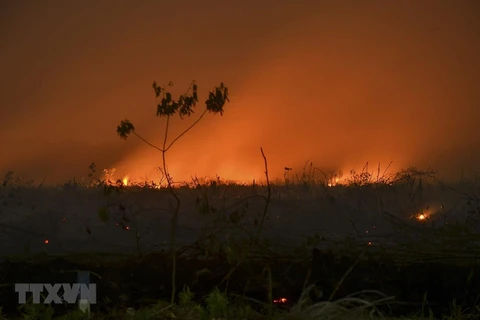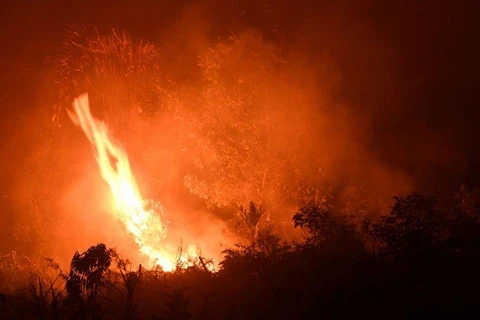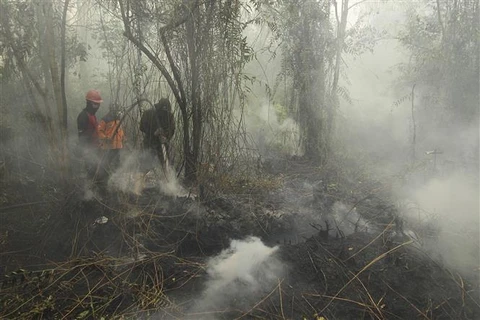 Forest fires in Indonesia typically occur as a result of slash and burn practices to clear land for oil palm and pulpwood plantations. (Photo: OI)
Forest fires in Indonesia typically occur as a result of slash and burn practices to clear land for oil palm and pulpwood plantations. (Photo: OI)Jakarta (VNA) – Indonesian people risk having their life expectancy shaved off by four years on average due to exposure to dangerous particulate matter caused by the haze from forest fires, according to the Energy Policy Institute at the University of Chicago.
Almost every year, toxic haze caused by wildfires engulfs vast parts of Sumatra and Kalimantan, filling the lungs of millions of people living in these areas, the Jakarta Post reported.
The fires typically occur as a result of slash and burn practices to clear land for oil palm or pulpwood plantations. As of September 20, there were 5,086 fire hotspots recorded in Indonesia and 328,724 hectares of land burned, according the National Disaster Mitigation Agency (BNPB).
In Central Kalimantan’s capital city of Palangkaraya, home to over 280,000 people, the air quality index (AQI) on September 16 was reported at the hazardous level of 452, according to AirVisual. Thus hundreds of thousands of people are exposed to high levels of unhealthy particulate matter with a diameter of 2.5 microns (PM2.5) or less.
This level of exposure to toxic air puts people in Riau and Kalimantan provinces at high risk of developing acute respiratory syndrome, an infection caused by inhaling unsafe levels of particulate matter in the air.
The number of acute respiratory syndrome cases in West Kalimantan reached more than 15,000 cases in July, whereas in Riau, the figure reached 15,346 in the first two weeks of September, according to the Health Ministry of Indonesia.
Local governments in Sumatra and Kalimantan have instructed families, especially children, to stay inside to avoid toxic air; while some civil society organisations are distributing N95 masks.
The BNPB reported that authorities have deployed dozens of helicopters, with over 200 million liters of water to extinguish the fires. The country’s Social Affairs Ministry and other government bodies have also set up dozens of safe houses, which are closed off spaces with air purifier units and oxygen tanks that can filter indoor air. But these devices are often too costly.
A lower-cost solution could be self-assembled and locally sourced air purifier units. For instance, a makeshift fan filter unit (FFU) can be assembled using short standing fans or floor fans, attached with a high-efficiency particulate air filter which can be found in car service outlets. The units can be installed with governmental subsidies so that all affected families can access the necessary protection. It should also be installed in schools to protect children.
Recently, Indonesian Health Minister Nila Moeloek voiced her support in using simple technological solutions to protect communities against the haze.
Facing the current haze season, civil society organisations and the government could work closely together to urgently respond to the public health needs with tools such as self-assembled FFU units and other appropriate and available solutions./.
VNA























